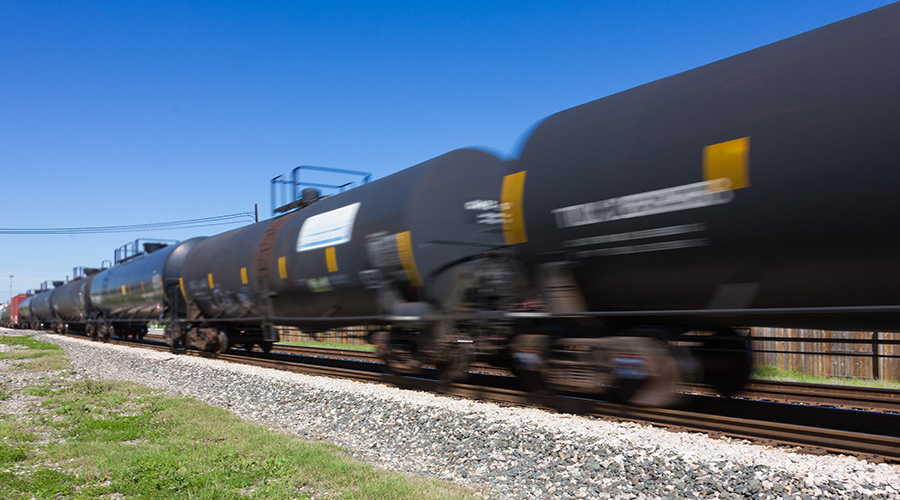BTS: 67% of rail tank cars met new safety standards in 2023
9/27/2024
By Julie Sneider, Senior Editor
The number of safer rail tank cars continued to increase in 2023, according to the Bureau of Transportation Statistics’ (BTS) latest report on the progress toward upgrading the North American tank-car fleet to stricter safety standards, especially for cars carrying Class 3 flammable liquids.
Released by BTS on Sept. 24, the annual report is required in accordance with the 2015 Fixing America's Surface Transportation (FAST) Act, which called for upgrading tank cars that carry flammable liquids to meet the characteristics of the DOT-117 and DOT-117R (retrofitted). Those characteristics include a thicker insulated/thermally protected tank, a full height head shield, and top and bottom valve fitting protections.
Several high-profile rail accidents involving tank cars carrying flammable liquids — including the 2013 rail disaster in Lac-Megantic, Quebec — prompted Congress and federal officials in Canada to pass new regulations of tank cars that carry flammable and hazardous materials. In the United States, those new requirements were included in the 2015 FAST Act.
The BTS’ 2024 report discusses the progress made in upgrading the fleet to the new standards, and summarizes the types of cars carrying Class I flammable liquids. The report also examines the status of the rolling phaseout schedule of both types of tank cars and the flammable liquids carried.
For example, by May 1, 2023, all DOT-111 tank cars were prohibited from carrying ethanol. And as of July 1, 2023, all non-jacketed CPC-1232 tank cars were prohibited from carrying ethanol.
All tank cars that were in service and subject to the FAST Act rules as they pertain to Class 3 flammable liquids were compliant with the phaseout deadlines, according to the report. In addition, 67% of all tank cars carrying Class 3 flammable liquids were built to the new DOT-117 specifications or were modified to meet the DOT-117R retrofit specification.
 U.S. Bureau of Transportation Statistics
U.S. Bureau of Transportation StatisticsThat compares to 2016, when 8% of the fleet that carried crude oil and other Class 3 flammable liquids consisted of new or retrofitted DOT-117s.
The next major deadline is May 2025, when jacketed CPC-1232 tank cars will no longer be permitted to carry ethanol and crude oil, and all DOT-111 and CPC-1232 tank cars will be prohibited from carrying other flammable liquids in what is federally classified as packing group I. Ninety-six percent of cars carrying crude oil in 2023 already met the new DOT-117 standards, according to BTS.
 U.S. Bureau of Transportation Statistics
U.S. Bureau of Transportation StatisticsTo track the progress of meeting the FAST Act standards, a survey is taken of tank car shops that have the ability to produce the new DOT-117s or retrofit existing cars to the DOT-117R. The results of the most recent survey indicated that 5,067 new DOT-117s are expected to be produced in 2024, and 1,229 existing tank cars will be retrofitted to the DOT-117R specifications — for a total of 6,296 new DOT-117s or DOT-117Rs introduced to the North American tank-car fleet. Another 23,300 non-DOT-117s or 117Rs remain for phaseout deadlines in 2025 and 2029, the report states.
To meet the requirement, about 5,825 tank cars per year will have to be built or retrofitted, which is “well within the capacity given the current output,” the BTS report states.
“It is expected that, by the end of 2029, all Class 3 flammable liquids will be carried in rail tank cars that meet or exceed DOT-117 specifications,” BTS officials said in a Sept. 24 press release.

